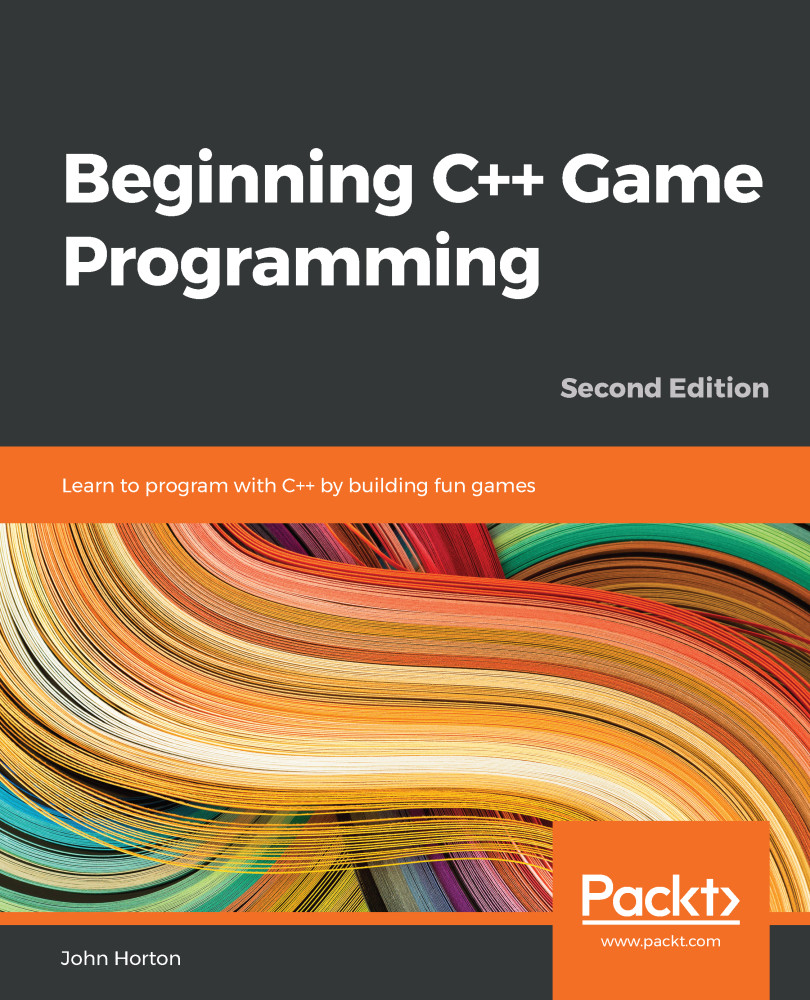FAQ
Q) Isn't this game a little quiet?
A) I didn't add sound effects to this game because I wanted to keep the code as short as possible while using our first classes and learning to use the time to smoothly animate all the game objects. If you want to add sound effects, then all you need to do is add the .wav files to the project, use SFML to load the sounds, and play a sound effect in each of the collision events. We will do this in the next project.
Q) The game is too easy! How can I make the ball speed up a little?
A) There are lots of ways you can make the game more challenging. One simple way would be to add a line of code in the Ball class' reboundBatOrTop function that increases the speed. As an example, the following code would increase the speed of the ball by 10% each time the function is called:
// Speed up a little bit on each hit m_Speed = m_Speed * 1.1f;
The ball would get quite fast quite quickly. You would then need to devise a way to...
































































